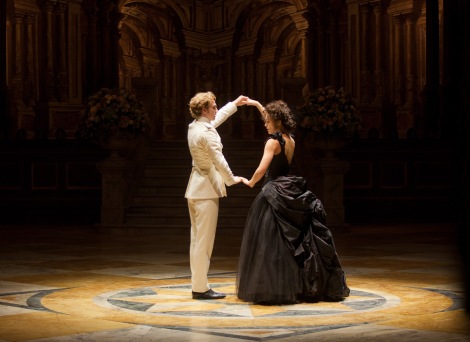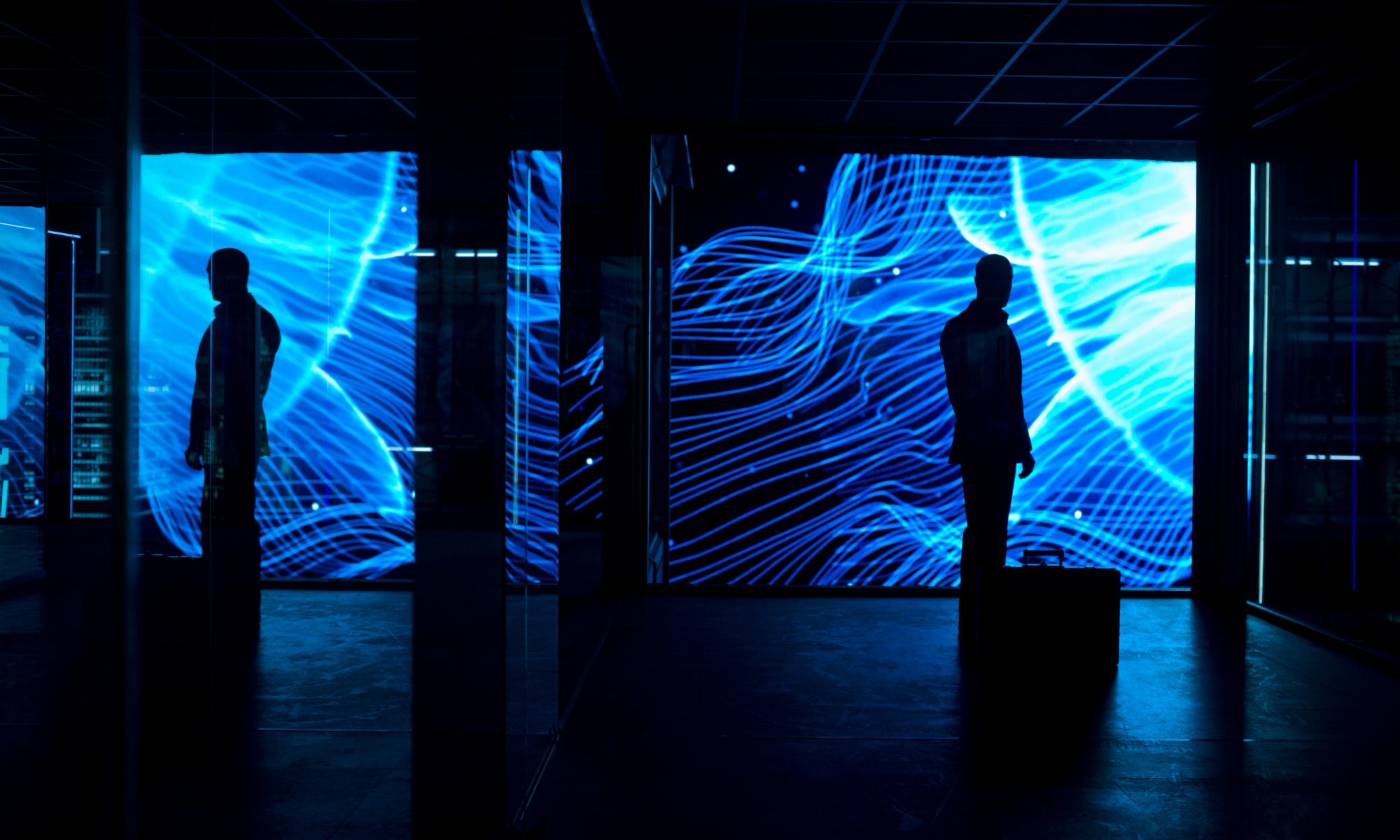Thomas J. McLean is an AwardsLine contributor. This article appeared in the Jan. 30 issue of AwardsLine.
In a year filled with remarkable imagery, the work of the Oscar-nominated cinematographers stands out as integral to the success of the movies they shot.
The nominees bring broad experience to their films. Seamus McGarvey, nominated for shooting Anna Karenina with director Joe Wright, came to the project off the summer blockbuster Avengers; Robert Richardson shot his fourth film with Quentin Tarantino with Django Unchained; Claudio Miranda went both digital and 3D to lens Life of Pi for Ang Lee; Janusz Kaminski made his 13th film with Steven Spielberg in shooting Lincoln; and Roger Deakins ventured into the world of James Bond with Skyfall.
AwardsLine asked the five nominees for Oscar’s Best Achievement in Cinematography to pick a key scene and break it down in detail. The choices, like the nominated films themselves, speak to the challenges inherent in the craft and its essential importance to making a movie.

Seamus McGarvey
The Scene: In a single sweeping, shot Vronsky (Aaron Taylor-Johnson) leads Anna Karenina (Keira Knightley) on the dance floor at a high-society ball, with their electricity igniting movement from the other dancers. They connect in a moment of silence, and, for a moment, the auditorium is empty before the dancers return, bringing the star-struck couple back to reality.
Behind the Scene: “(Director) Joe (Wright) worked very closely with Sidi Larbi Cherkaoui on the choreography of the scene, and the actors rehearsed it very much in advance to create a gestural language for this dance—one that wasn’t a classical waltz; it was fresh and modern and expressive. What we also explored with it was the idea of the photography shifting in its personality during the take, so we would migrate from a kind of an objective point of view to a subjective one within the same shot, and that the camera would shift perspective within the shot and then back again. From a lighting point of view, it allowed me to experiment with lighting that I had never tried before—theatrical lighting within a movie setting. All those things make it gently distinctive in terms of the film. On the day of, we had a plan for how we would shoot it, and we spent quite a bit of time planning the shot and planning the choreography. I had a huge amount of work to do in terms of programming the lighting changes because even as the camera is moving around in a circle, there are quite complex shifts in the lighting that I was controlling on a wireless pad, with which we were able to cue the lights live to preprogrammed settings. There were probably 30 or 40 cues in that one shot. But it has a simplicity. You don’t want to overwhelm the shot or the emotion of the shot with trickery.”

Robert Richardson
The Scene: A flashback, in which Django (Jamie Foxx) fails to convince the Brittle brothers not to whip his wife, Broomhilda (Kerry Washington).
Behind the Scene: “The style is wildly different than the majority of sequences within Django Unchained. When Quentin talked to me of the scene, he asked that we shoot with two cameras, which is quite rare for us. He knew that an emotion and a spiritual space would be found once we began filming, and he wanted to capture that. Spiritual is an understatement. Shooting the scene was an act of enlightenment. Both Jamie and Kerry poured their hearts and their souls into the sequence. To watch the acting on set was extremely difficult for me, as it moved further and further away from acting or as I moved further and further from perceiving it as acting. When I was photographing Jamie, I noticed clouds race across his eyes then mist raised as he fell to his knees begging, tears sliding down his cheeks. Kerry was tied tightly to a wooden frame, stripped of her clothes, and one of the Brittle brothers pulled back a whip and fiercely let go. Kerry lurched from the lashing. Her screams stopped everyone on the set. I began shooting within a state rarely achieved: A blind desire to capture this particular moment that was so very real that, in hindsight, I know was out of place for a feature film. Deeply provoked and touched by the acting, which appeared to disappear as we settled into the past. It was as if we were transported through time. The setting, meaning the location, was on Evergreen Plantation, which is listed on the National Register of Historic Places. Two-hundred-year-old live oaks covered the property. Beneath these stunning trees sat 20 or so slave quarters. Ironic to have such beauty atop such hideous history. We filmed amidst those slave quarters. Haunting. A vital slap of reality. What was extremely challenging was to maintain a vision for the scene when the events within the frame were as powerful as these were. Documentaries can mirror the moment described above. But I have experienced few in my career that rival.”

Life of Pi
Claudio Miranda
The Scene: Young Pi (Gautam Belur) attends a spectacular candlelit ceremony with his Hindu mother as his older self narrates his and his family’s differing views on religion.
Behind the Scene: “It’s supposed to be big, with lots of light and spectacle. So I thought it would be really beautiful to try to fill this place with tons of candles. And I said, ‘Wouldn’t it be great if we could totally light the space with candles? How many would it be?’ And we were kind of walking around and measuring, and Ang (Lee) was talking like we should have one for every square foot. That’s 50,000 candles! We had to have that lit for the whole night, so I think we ordered 120,000. I don’t think it still was enough, and we added more with CG. The story was a little bit more about the mother—this was her religion, and they were taking her to this place and she was very introspective at that moment. That was shot pretty early on, just outside of Pondicherry. It was a scene about getting the kid. The kid was young and sometimes a little bit hard to get. We did know the beats. and we did go through those beats, and we wanted to be getting some angles on top—and we shot until the sun came up.”

Lincoln
Janusz Kaminski
The Scene: Having successfully passed the 13th amendment and ending the Civil War, Lincoln (Daniel Day-Lewis) is reminded he is due at the theater and walks down the halls of the White House toward a greenish window and the exit.
Behind the Scene: “It’s not a difficult shot. I just like the metaphor of it, and that’s what makes it special. I chose that shot simply because it represents the metaphor of what is going to happen. This is the last time we are seeing him, except for his death bed. And I like that he’s going toward slightly greenish glass, which resembles the light on his death bed, which had a little bit of a greenish quality. He’s almost walking toward an unknown future, which as we learn quickly, it’s death. One of the difficulties was to find the proper choreography between Mr. Slade, who was his servant, who was trying to remind the president about taking his gloves with him, and the pace and direction of the president walking toward that glass window. I think we had done several takes, because somehow we couldn’t get the coordination between the camera and the actors’ movement. I also remember it was very dimly lit. It was probably not the brightest set that I’ve done in that particular movie. We wanted a bit of a silhouette of Lincoln going toward the exit of the White House. We all know what happens to him, and it’s a combination of sadness because he’s going to die but yet it’s not a completely depressed scene because he’s achieved so much.”

Roger Deakins
The Scene: James Bond (Daniel Craig) engages his target, a professional hit man (Ola Rapace), in a fight to the death in an under-construction skyscraper illuminated by a massive LED screen at night in Shanghai.
Behind the Scene: “It’s one we shot early on, and I felt I was taking a chance by suggesting or pushing for that kind of look, the big LED screens and light and the whole set just with those source lights that you see in the shot. Also the fact that we did it on stage as opposed to a location, which was the original intention. And I was quite pleased the way it turned out. When it’s one of the earlier scenes in a shoot, you feel a sense of relief that you’ve achieved something close to what you had in your mind’s eye when you started. We spent a lot of time prepping. Obviously it was a big stage set, and there was a lot of very particular lighting that was built into the set. We spent actually weeks and weeks testing a few different big LED screens for the playbacks. And then we had to order a particular one we liked, which was a combination of being a fine pixel count and also being practical to do in the size we wanted, because it was about 60 by about 40 or 50 feet, I think. And we had to find one we could rent for the period we needed it and, in fact, it was available for only a small window of time, so we had to shoot the scene and then it had to be broken down and sent back before we had really cut the scene. It was a bit of a risk in it, really. But it was good being on stage at Pinewood because we were shooting there quite a bit, and I could go in at the end of the shoot day and look at the lighting and just gradually build it. ”

